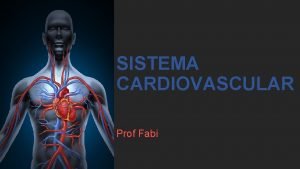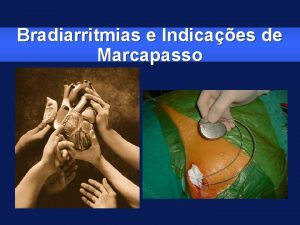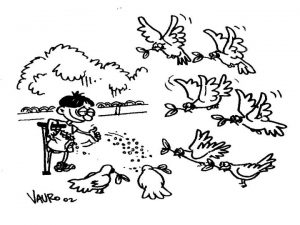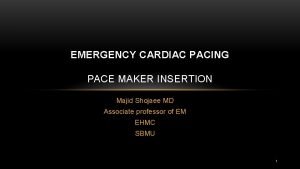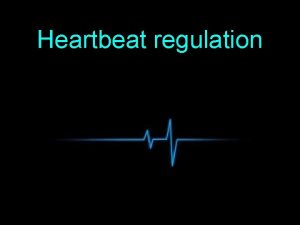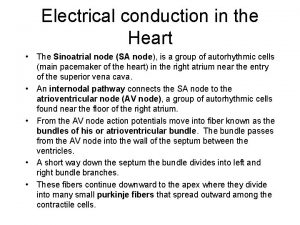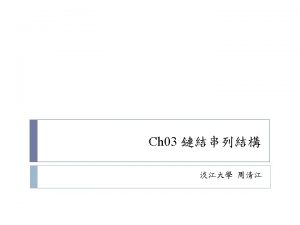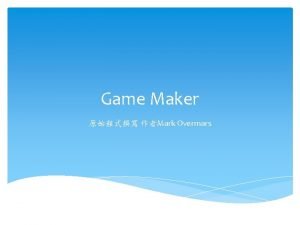Intrinsic Conducting System Sinoatrial node Electrical pace maker





- Slides: 5

Intrinsic Conducting System • Sinoatrial node. – Electrical pace maker. • Atrioventricular node. – Receives impulses originating from SA node. • Bundle of His – Electrical link between atria and ventricles. • Purkinje fibres. – Distribute impulses to ventricles.

• The impulse-generating and impulse conducting system of the heart comprises several specialized structures whose coordinated functions act to initiate and regulate the heartbeat. 1. The sinoatrial node, the “pacemaker” of the heart, is located within the wall of the right atrium. It generates impulses that initiate contraction of atrial muscle cells; the impulses are then conducted to the atrioventricular node. 70 - 80 impulse/min 2. The atrioventricular node is located in the wall of the right atrium, adjacent to the tricuspid valve. 40 - 60 impulse/min

3. The Bundle of His is the band of conducting tissue radiating from the AV node into the interventricular septum where it divides into two branches and continues as Purkinje fibers. 30 - 60 impulses/min 4. Purkinje fibers are large, modified cardiac muscle cells that make contact with other part of the cardiac muscle. 15 - 40 impulses/min

The Conduction System Ø Electrical impulses from your heart muscle (the myocardium) cause your heart to beat (contract). This electrical signal begins in the sinoatrial (SA) node, located at the top of the right atrium. The SA node is sometimes called the heart's "natural pacemaker. " When an electrical impulse is released from this natural pacemaker, it causes the atria to contract. Ø The signal then passes through the atrioventricular (AV) node. The AV node checks the signal and sends it through the muscle fibers of the ventricles, causing them to contract. Ø The SA node sends electrical impulses at a certain rate, but your heart rate may still change depending on physical demands, stress, or hormonal factors.

Cardiac Electro-Physiology • Phase 0: Rapid depolarisation of the cell membrane and it is associated with the inflow of the Na+ ions. • Phase 1: A short initial phase of rapid repolarisation due to activation of a Cl- current (inflow). K+ channel rapidly open and close causing a transient outward current. • Phase 2: Action potential plateau. A period of more gradual repolarisation in which there is a movement of Ca 2+ ion into the cell. • Phase 3: Final repolarisation. A second period of rapid repolarisaion during which K+ move out of the cell. • Phase 4: A fully repolarised state during which K+ channel opens. K+ move into and Na+ out of the cell again to enable the next cycle to begin. 1 0 4 2 3 4
